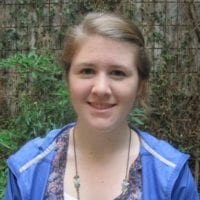
Investigation of Genomic Regions Putatively Associated with Ionomics Phenotypes in Rice
My project centers around mineral nutrition in rice and the investigation of two significant hits discovered using Genome Wide Association Analysis from data collected in a previous study. The first is MOT1, a gene that was recently characterized in Arabidopsis Thaliana, as a member of the sulfate transporter super-family. MOT1 is specifically involved in the transport of molybdenum (Mo), a trace element crucial for plant development. Molybdate is used for the biosynthesis of a pterin-based cofactor known as MoCo, which is a component of some oxireductases like nitrate reductase, a key enzyme in the nitrogen assimilation process. This summer I have been working to characterize a putative molybdate transporter in rice (LOC_Os08g01120) using numerous in silico techniques, such as database mining and protein modeling as well as investigating structural variation between accessions of rice through DNA sequencing and haplotype analyses. The second part of my project is an investigation into a genomic region putatively associated with sodium shoot content. This region is of interest because increased levels of salinity in the soil are a leading cause of rice crop failure worldwide, and with this experiment we hoped to gain a better understanding of the mechanisms regulating salt tolerance. To examine this region we grew 3 introgression lines derived from a cross between a wild rice relative and a domestic tropical japonica. Each introgression line and the two parents were grown under sodium treated and control conditions in a temperature controlled growth chamber. Differences in several phenotypes including plant height, tiller number, dry weight biomass, visual index of salt tolerance, percent chlorosis, sodium concentration, and sodium to potassium ratio (a metric of salt tolerance) were investigated.
My Experience
Participating in the PGRP Program was a great opportunity not only because of the skills/techniques that I was able to take away from my time in lab, but because it gave me a realistic view of what it actually means to go to graduate school and pursue a career in research. Though 10 weeks is by no means a significant amount of time in the scope of research, I was able to delve into a putative gene for Molybdenum transport as well as a region putatively associated with sodium shoot content in rice. I carried out this investigation as a part of my mentor’s larger project, and I was able gain experience in everything from bioinformatics to planting and DNA sequencing. Overall, Ithaca is a great place to spend a summer, and the lab environment (as well as the intern program as whole) was collaborative and supportive – I learned a lot!
